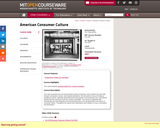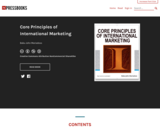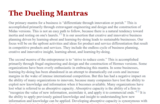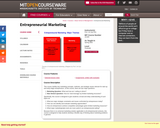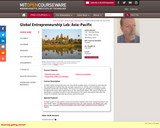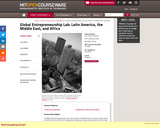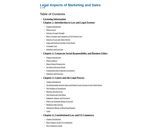CHAPTER 1
Chapter 1: Introduction to International Marketing
1.1 Defining Marketing
1.2 Defining International Marketing
1.3 The Motivation for International Marketing
1.4 Stages in International Marketing
1.5 Why International Marketing Matters
1.6 Challenges of Global Marketing
1.7 What is Globalization
1.8 The Globalization Debate
1.9 Standardization and Customization
CHAPTER 2
Chapter 2: International Business and Trade
2.1 International Trade
2.2 International Economic Cooperation among Nations
2.3 Understanding Tariffs
2.4 Regional Economic Integration
2.5 The United Nations and the Impact on Trade
2.6 Trade Controversies
2.7 Foreign Direct Investment
CHAPTER 3
Chapter 3: Social and Cultural Environment
3.1 Factors Shaping the Global Marketing Environment
3.2 The Social and Cultural Environment
3.3 Importance of Culture on Markets
3.4 What is Culture
3.5 Describing Culture
3.6 Marketing Across Cultures
CHAPTER 4
Chapter 4: The Economic and Political Environment
4.1 The Economic Environment
4.2 The Political Environment
4.3 Political Risk
4.4 Legal Risk
CHAPTER 5
Chapter 5: Economic Development in the World
5.1 World Economies
5.2 Classifying World Economies
5.3 Understanding the Developed World
5.4 The Developing World
5.5 Emerging Markets
CHAPTER 6
Chapter 6: Global Market Planning
6.1 Measuring Market Attractiveness
6.2 Global Market Opportunity Assessment - PESTEL Analysis
6.3 Global Market Opportunity Assessment - CAGE Analysis
6.4 Global Market Opportunity Assessment - Scenario Planning and Analysis
6.5 Selecting the Countries to Enter
6.6 Global Market Segmentation
6.7 Using Demographics to Guide Global Marketing Strategy
6.8 Target Market Selection
6.9 Basics of Positioning
6.10 Global Positioning
CHAPTER 7
Chapter 7: Global Market Entry Modes
7.1 International Entry Modes
7.2 Exporting
7.3 Licensing
7.4 Franchising
7.5 Contract Manufacturing
7.6 Joint Ventures
CHAPTER 8
Chapter 8: Global Products
8.1 Global Product Development
8.2 Global Products and Services
8.3 Product Adaptation Decisions
8.4 Global Innovation
8.5 Global Innovation at the BOP
CHAPTER 9
Chapter 9: Global Branding
9.1 Formulating a Global Brand Strategy
9.2 Global Branding
9.3 Global Brand Structures
9.4 Determinants of Global Brand Structure
9.5 Managing Key Strategic Brands
CHAPTER 10
Chapter 10: Global Channels and Supply Chains
10.1 Basics of Distribution Channels
10.2 Global Supply Chains
10.3 Global Sourcing and Distribution
10.4 Organizing The Channel
CHAPTER 11
Chapter 11: Global Promotions
11.1 Changes in Promotion
11.2 Global Communication Platform
11.3 Global Communication Strategies
CHAPTER 12
Chapter 12: Global Pricing
12.1 Basics of Pricing
12.2 Introduction to Global Pricing
12.3 Global Pricing Approaches
12.4 Currency Fluctuations and Global Pricing
12.5 Tariffs and Global Pricing
12.6 Quotas and Dumping
CHAPTER 13
Chapter 13: The International Marketing Plan
13.1 Marketing Plan Basics
13.2 Writing the International Marketing Plan

